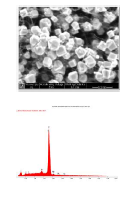Jason Kyle Anderson, Dr. David Allred, and Department of Physics and Astronomy
Introduction: Traditional micro fabrication processes are confined to a small subset of possible materials due to limitations on etching. They are also confined to low aspect ratio fabrication due to limits in both etching process and stability of thicker film deposition processes. Carbon Nanotube Templated Microfabrication (CNT-M) technology has introduced a dramatically different approach to micro fabrication that fabricates without significant etching processes and achieves thick features with the equivalent of thin depositions. This is achieved by forming the desired structure in carbon nanotubes and then filling, or infiltrating, that structure with the material of choice. Optimal materials infiltration for CNT-M should be limited not by mass transfer into the structure, but by sticking of the reacting species to the carbon nanotubes. This technology has been developed at BYU using materials like silicon and carbon; however, a suitable process for metals has not yet been found. Micro fabrication of metals is sought after for their higher density, and improved electrical and mechanical properties as compared to silicon and other traditional micro fabrication materials. I began the project to develop atomic layer deposition (ALD) of tungsten (W), using a gaseous form of W and atomic hydrogen (H) as the reactive agent. This agent is needed for abstracting the nonmetal atoms such as C, O or F that act as ligands for the gaseous form of W. This process has a high likelihood of success for CNT-M application. This success stems from the ability to decouple the mass transfer of the metal from the deposition on the nanotubes. If these processes are successful, a whole new range of micro fabricated devices such as high sensitivity inertial sensors, x-ray collimators, and high strength micro sieve filters will be enabled. All three of these potential applications have commercialization routes either through interest from companies or forming of a company.
Methodology: Our technique for ALD was to use WF6 as a deposition layer on the carbon nanostructures. Because of the fluorine, this is a self-limiting deposition, meaning the molecules won’t stick together and we will achieve a limited deposition. This is ideal as it prevents external deposition from blocking off infiltration passages for internal deposition. This is important in order to achieve a uniform deposition throughout the entire structure, rather than clumping together on the edges. We then flowed H plasma through the sample chamber, causing the H atoms to remove F (Fluorine) atoms from the WF6, leaving a thin layer of W deposited. The cycle was repeated many times to achieve W deposition. Our main challenge in completing this project was reconfiguring an existing Chemical Vapor Deposition (CVD) system to allow for Atomic Layer Deposition (ALD) techniques. After hooking up additional gas lines into the system to introduce WF6 and installing a microwave generator and an antenna to create the H plasma, we installed filters and sensors for HF, a toxic byproduct of the chemical reaction. In order to increase the W composition in the nanotube microstructures we changed multiple settings such as gas exposure time, WF6 settling time, and number of cycles per deposition. We also tried using ozone treatment on the samples before deposition to increase the number of nucleation sites in the nanotube forest.
Results: The first runs of the system were done for 8 cycles of WF6 and H, with the sample being exposed to both gasses for alternating cycles of 30 seconds and a 5 second settling time in between. These were done using molecular H rather than a plasma. The external deposition was limited to an atomic composition of 17% W. Consequent runs were changed to be 5 second intervals for each gas and the use of Hydrogen plasma as the reacting agent. After performing 120 cycles of deposition we yielded samples composed of 62.48% C and 22.04% W. When we incorporated ozone treatment into the sample preparation process we were able to achieve an outer composition of 68% W.
Discussion: The process was gradually improved to produce better percentages of W in the samples. The main contributing factors to deposition appear to be use of the H plasma, which contains more energy than the H gas, enabling more removal of F from the sample, and ozone treatment of the samples, which creates more attachment sites on the carbon nanotubes for the WF6 to deposit. The discrepancy between outside and inside measurements of the final samples shows non-uniform deposition, as there is an exponential drop in W composition as measurements were taken from deeper and deeper in the nanotube structure. Thus, while the process has been established and improved, there is still not uniform deposition throughout the samples.
Conclusion: We were able to refine the process for depositing tungsten into a carbon nanotube microstructure. Shorter gas exposure times, longer gas settling times, hydrogen plasma, and ozone treatment of the carbon nanotube structures all improved W deposition. This process was refined to create CNT structures composed of 68% W externally. However, the high levels of deposition did not extend inside the structure. There are still many factors to be refined in this process to achieve more uniform deposition throughout the structure. We will continue to improve this deposition method by optimizing flow rates, exposure times, cycle numbers, and chamber temperatures.
Figure 1 – SEM image of W deposition on a carbon nanotube structure using ALD
processes, ozone treatment, and a hydrogen plasma. The body-centered cubic
structure is a good indicator of W.
Figure 2 – EDAX Results of our final external deposition, showing an atomic
percentage of 68% W and 12% C.

